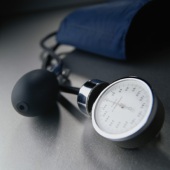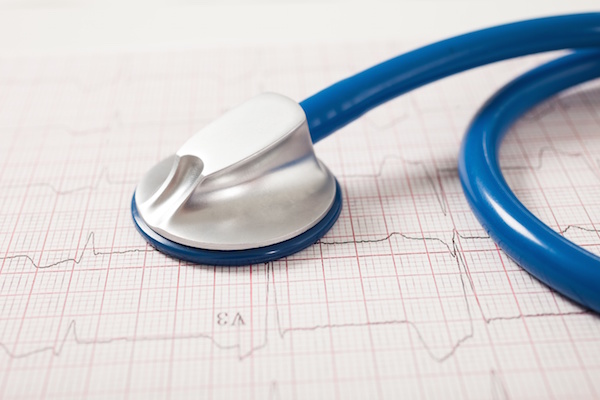
WEDNESDAY, Nov. 17 (HealthDay News) — A novel approach to blast away kidney nerves has a striking effect on lowering blood pressure in heart patients whose blood pressure wasn’t budging despite trying multiple drugs, Australian researchers report.
Although this study only followed patients for a short time — six months — the authors believe the approach, which involves delivering radiofrequency energy to the so-called “sympathetic ” nerves of the kidney, could have an effect on heart disease and even help lower these patients’ risk of death.
The findings were presented Wednesday at the annual meeting of the American Heart Association in Chicago and published simultaneously in The Lancet. The study was funded by Ardian, the company that makes the catheter device used in the procedure.
“This is an extremely important study, and it has the potential for really revolutionizing the way we deal with treatment-resistant hypertension,” said Dr. Suzanne Oparil, director of the Vascular Biology and Hypertension Program at the University of Alabama at Birmingham.
Oparil spoke at a news conference Wednesday to announce the findings, though she was not involved in the study.
Treatment-resistant blood pressure, defined as blood pressure that cannot be controlled on three drugs at full doses, one of which should be a diuretic, afflicts about 15 percent of the hypertensive population, Oparil explained.
“Many patients are uncontrolled on four or five drugs and have truly refractory hypertension,” she added. “If it cannot be controlled medically, it carries a high cardiovascular risk.”
This radioablation procedure had already successfully prevented hypertension in animal models, Oparil noted.
According to study author Murray Esler, the device specifically targets the kidneys’ sympathetic nerves. Previous studies have indicated that these nerves are often activated in human hypertension, said Esler, a cardiologist and scientist at the Baker IDI Heart and Diabetes Institute in Melbourne, Australia.
All of the participants in this study were taking at least three blood pressure medications and many were on five for more than five years. Despite this, their blood pressure stubbornly refused to go below 160 mm Hg systolic (the top reading). In fact, the average blood pressure in the group was 178 mm Hg systolic. Normal systolic blood pressure is less than 120.
The procedure involves inserting a catheter into the kidney via the groin, Esler explained.
About 100 men and women aged 18 to 85 were randomly assigned to undergo the procedure and keep taking their medication, or to simply stay with their drugs.
Blood pressure measurements taken in a doctor’s office went down by 32/12 mm Hg which, said Oparil, was “a very dramatic effect.” They did not change in the control group, but stayed at 178/97 mm Hg.
Several patients saw their systolic blood pressure wander below 140.
Readings taken at home were not as dramatic. The reasons for this are unclear.
The procedure was also found to be safe, with no damage to the kidneys and no blood clots, at least for the six months of the study.
And the price tag? “The all-up cost (device, procedure and overnight stay in hospita) at present is approximately $10,000,” Esler said.
A number of questions remain, including whether the effect is lasting, whether the nerves will grow back and whether this approach would be as effective in non-white populations or in people with diabetes or metabolic syndrome or even those with lower starting blood pressures, Oparil said.
The approach, which is already clinically available in Australia and Europe, will be tested in the United States starting next year, Esler added.
“I have been asked if this can cure hypertension,” Esler concluded. “That’s a big task. As a young man 40 years ago that was my dream, curing hypertension. Now we have a device moving in that direction but curing hypertension is probably still a dream.”
More information
There’s more on high blood pressure at the American Heart Association.

